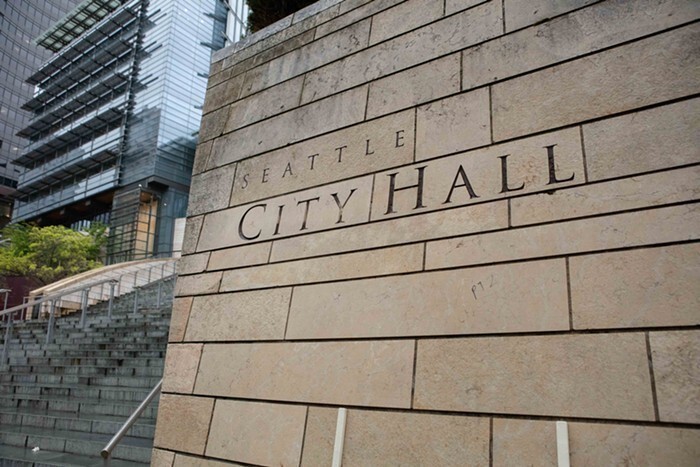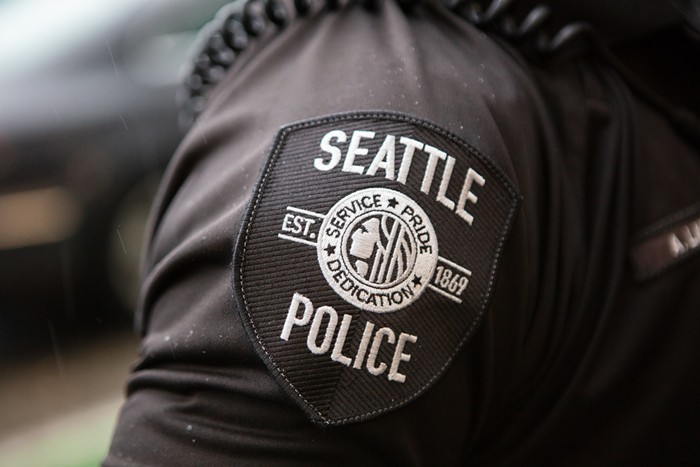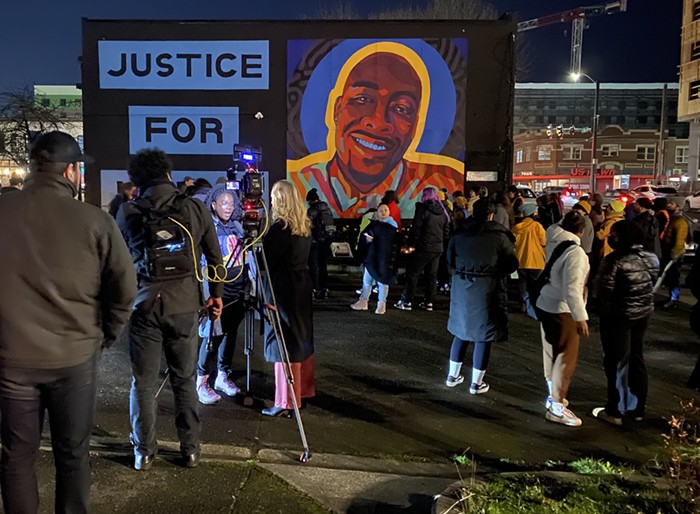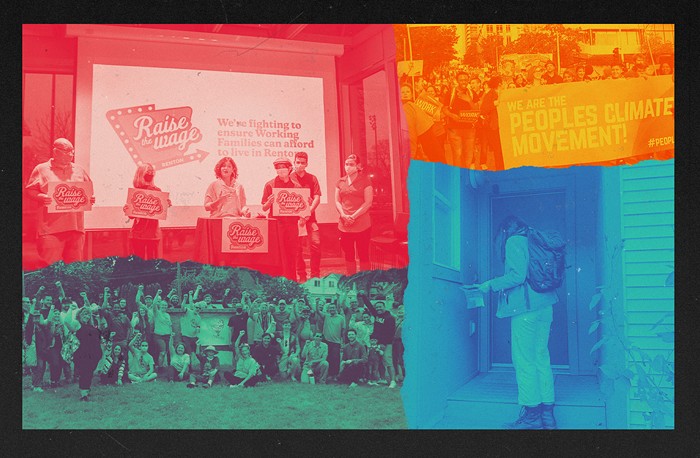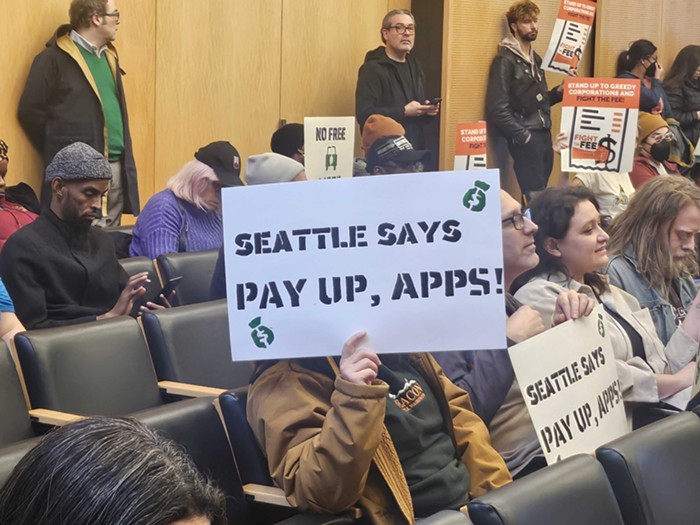
This weekend, activists are planning a massive direct action at the Shell and Tesoro refineries near Anacortes. Like last year's kayaktivism against Shell's Arctic drilling rig in Elliott Bay, environmentalists say they'll take to land and water to protest. But long before environmentalists identified the Shell and Tesoro refineries in Anacortes as the spot to hold a demonstration on the broader issues of fossil fuel use, filmmakers Tracy Rector and Annie Silverstein made a documentary with teens from the nearby Swinomish Indian Tribal Community about the impact those refineries have had on locals.
March Point follows Nick Clark, Cody Cayou, and Travis Tom as they interview their elders about the history of the land on which the refineries were built. The Swinomish have fished in the waters that now surround the refineries for thousands of years, but ceded most of their land to the US in 1855 in the Treaty of Point Elliott—a deal that reserved fishing rights and some reservation land in return. After Shell built two refineries on March Point in the '50s, the waters became too polluted to fish. Towards the end of the documentary, the three teens travel to Washington, D.C. to see how the federal government's decisions are made. I won't spoil it, but it's one of the most poignant moments of the film (which you can watch over at Vision Maker Media.)
Tracy Rector, one of the film's directors, now lives in Seattle and is curating an exhibit called Women on the Brink at Vermillion. I caught up with Rector on Thursday to ask about the film's impact eight years after she made it. Q&A below!
Eight years later, what does March Point mean to you?
Initially it was a way to engage Nick, Cody, and Travis in something positive. And it was more of this exploration of: what is March Point? It kind of looks like Gotham City—with all the lights it kind of looks fascinating in that comic book kind of way. And in investigating that with them we discovered that one, it was on squatted territory. They took it from the tribal people, the initial squatters, that then became the land of Shell, Tesoro. Two, how much pollution that it's dumped, both in the water and in the air. And then the health impacts on the people, especially for people who eat shellfish and seafood every day as part of subsistence living.
So just being initially blown away by our somewhat innocent investigation into realizing the significant impact that oil refinery and other oil refineries have disproportionately on Native people. That also opened us up to understanding that there's this whole history of placing not just oil refineries, but plutonium mines, and other toxic undertakings meant to reap the resources from the land and the waters next to, or near, or on Native reservations.
Today what March Point means to me is that hopefully we were part of a movement to shine some light on environmental racism that impacts people of color; that we were able to bring attention to the needs of indigenous people and their treaty rights; that keeping the water clean is a responsibility of the government, because the treaty rights specifically state that Native people have certain access to the lands and waters, and they need to be clean in order to have that fair access.
Did Shell talk to you for the film?
They were pretty upset. We got an interview with one of their employees and I think that we had access because it was these high school students asking for him to give an interview. He stumbles, that one Shell representative, and it's pretty clear in that moment that there's a major PR issue at stake. So that was interesting, realizing oh, wait, now we're on the radar of this major corporation. I think that's a good thing when people get mad at you and you're on the radar—that means you're touching a sensitive point. They realized that there's some power in that.
How does this current installation relate to some of the themes of your earlier work, in terms of colonization?
This is my second art installation. And it's in response to my first one, which was called You Are on Indigenous Land, and it was in response to the American outcry against accepting immigrants into the country from Syria. It was right around Indigenous People's Day in October and I was like, wait a minute. You all, unless you're part of the 2 percent of this country who are Native, are immigrants. So it's not really your place to say who's here and who's not. Regardless, you're on indigenous land. So remember where you're at and behave properly and be welcoming. And this show sprung out of the "highway of tears" in Canada. There's thousands of indigenous women who have been murdered and/or missing, and there's been no resolution. There's not been adequate searches, and it's because of this feeling that they're disposable. And I got to thinking well, okay, so those issues are in place because of contact. Because of colonization. Because of disproportionate environmental racism that's causing people to be unhealthy or not sustainably live. So I was really feeling upset and wanting to do work around that. And my response was this art show around strong female presence. Images creating safe space, especially on the Hill with so many recent assaults and rapes. It's again asserting that we're on indigenous land, asserting that as women we should be respected, and we deserve to be safe, and we will not be pushed out. These red butterflies? [Rector points to red butterflies that have been printed on the walls of Vermillion.] They're on spots around town where women have been raped or murdered or assaulted.
Did you get that data from the Seattle Police Department?
Yes. One of my volunteers compiled all of the data from 2009 to the woman recently on 21st who was found in the recycling, Ingrid Lyne. He compiled the data from 2009 to that, the present. The underlying issue is to bring attention to women's safety and rights, knowing that indigenous women are often times forgotten. Or we're not often cared for in the same way to find justice. Many tribal girls have gone missing and have been taken as part of sex trafficking. The I-5 corridor, Chehalis, Nisquallty, urban Natives in Tacoma are dealing with the fact that young urban Native girls and women are being taken right now.
Do you think the issues of assault and colonization and environmental degradation are linked?
Absolutely. I would say that in indigenous settings when we're talking about this issue, we see assault as women as assault on Mother Earth, and that's the same as assaulting a sister, a mother, and child, and vice versa. It's damage not only being done to the person but to the essence of creation itself, and we're all connected. So the impact goes beyond one individual person. It goes into all of our multiple realities. I often hear and I feel this, too, that as indigenous people, we're not separate from the land. We are part of the land. And I think that's a different viewpoint from prevalent, capitalistic views. We don't own the land, we don't own the waters, and it's our privilege to be in stewardship of Mother Earth, not to be raping her.
This interview has been lightly edited and condensed for clarity.
